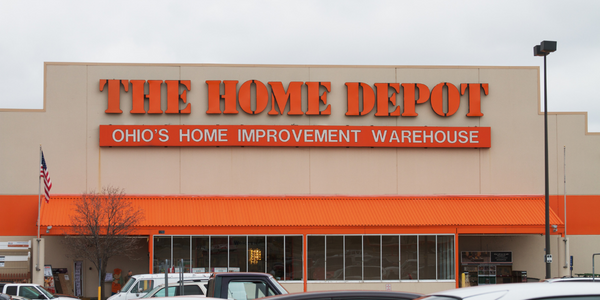下载PDF
OmniStack Solution with Cisco UCS Accelerates IT Modernization, Data Migration and DevOps
技术
- 基础设施即服务 (IaaS) - 云计算
- 基础设施即服务 (IaaS) - 云存储服务
适用功能
- 商业运营
用例
- 基础设施检查
服务
- 云规划/设计/实施服务
- 系统集成
挑战
Marketing Innovators’ aging IT systems–HP servers and SAN arrays supporting a variety of business applications–were becoming increasingly costly and inefficient to operate, impairing service agility and business innovation. Deploying new workloads–allocating compute and storage resources, configuring data protection policies–took days using the company’s legacy storage solutions and data backup and replication tools. Shane Ladd, Sr. System Administrator for Marketing Innovators, initiated a data center modernization program to improve the scalability, performance and economics of the company’s IT infrastructure. After an extensive evaluation process involving a number of vendors including Nutanix®, Nimble Storage, Scale Computing and Maxta®, Ladd selected SimpliVity OmniStack Solution with Cisco UCS for its next-generation data center architecture.
关于客户
Marketing Innovators International, a leader in people performance management solutions, replaced its legacy HP server and storage systems with SimpliVity hyperconverged infrastructure. The SimpliVity OmniStack solution with Cisco UCS helps the firm reduce TCO, improve IT agility and ensure high performance and availability for the company’s business-critical applications and data.
解决方案
SimpliVity’s hyperconverged infrastructure solution is designed from the ground up to meet the increased performance, scalability and agility demands of today’s data-intensive, highly virtualized IT environments. The solution eliminates cost and complexity by consolidating a variety of IT functions–including compute, storage, network switching, replication, and backup–onto virtualized, industry-standard x86 hardware, with global unified management. The solution delivers the best of both worlds: x86 cloud economics and enterprise capabilities including VM mobility, Data Efficiency, Performance and Global Unified Management. With their transformation project Marketing Innovators replaced seven racks of legacy HP equipment with four 2U OmniStack with Cisco UCS C240 M4 nodes in half a rack. The SimpliVity hyperconverged infrastructure solution with built-in VM mobility and data protection slashes TCO by reducing space, power and cooling requirements and simplifying ongoing administration.
运营影响
数量效益
相关案例.

Case Study
The Home Depot's IT Innovation with Nutanix: A Case Study
The Home Depot, the world's largest home improvement retailer, was facing a significant challenge in enhancing the performance and scalability of its IT infrastructure while reducing the total cost of ownership (TCO). The company's traditional approach of upgrading to faster servers and more efficient storage was no longer sufficient. The Home Depot needed a more innovative solution to reduce TCO and improve operational efficiency for its vast retail store and e-commerce business. The company was also looking for a way to consolidate its server, storage, and virtualization teams into a single operations group to optimize and manage the entire infrastructure stack from a single console. The challenge was to find a solution that would allow them to achieve these goals while also enabling them to quickly deploy new applications to internal users and customers.

Case Study
Modular AI Defect Inspection Solution for Efficient Semiconductor Equipment Upgrades
Smasoft Technology Co., Ltd., a System Integrator that develops industrial automation software and offers AI application solutions, was commissioned by a semiconductor equipment manufacturer to implement AI inspection features into their Extreme Ultraviolet Light (EUV) pod inspection machines. The existing AOI software in the EUV pod inspection machines could only identify defective products but could not trace the cause of the defects. The manufacturer wanted to upgrade their machines with AI features to make the products more useful. The AI solution needed to complete the analysis of 380 images for a single pod within two minutes and inspect different materials simultaneously. This required multiple sets of AI models for interpretation. The solution also needed to be installed in a cabinet in the lower half of the machines, which posed a challenge due to the limited space. Smasoft needed to purchase a hardware solution with strong computing performance, stable operation, compact size, and flexible configuration to overcome these challenges.

Case Study
Revamping EE's Legacy ERP: A Case Study on BT's Strategic Transformation
EE, even after its merger with BT, was operating its ERP estate on legacy infrastructure, hosted on the premises of a third-party supplier. This outdated system resulted in a volume-based operational model, higher time to market, longer delivery cycles, and unsatisfactory customer experience. BT recognized the need for a strategic transformation of these aging ERP systems and sought a partner who could proactively manage application services. The partner was also expected to handle development requirements associated with application management services, drive accountability, and ownership with a time and target-driven transformation of these services. BT's primary goals were to improve customer experience, reduce cycle time, and measure these improvements with precision.

Case Study
IFFCO Boosts IT Performance and Innovates Agriculture with Oracle Cloud
Indian Farmers Fertiliser Cooperative Ltd. (IFFCO), the world’s largest manufacturer and marketer of fertilizers in the cooperative sector, was facing several challenges in its quest to innovate and improve the livelihood of farmers in India. The organization had recently launched a new product, nano urea, which brought new demands to IFFCO’s cloud computing needs. The organization needed a reliable cloud vendor to support the processes of 6–7 new manufacturing plants during the upcoming year, enhancing its production capability 300–350 million bottles of nano urea to meet increasing demand. IFFCO’s cloud adoption was driven by a need to innovate. The organization wanted capabilities for a dynamic business that can adapt to the changing needs of the market while growing fast. However, it was inhibited by rigid on-premises data center deployments and the overhead of maintaining legacy systems. IFFCO wanted to apply the elasticity and availability of cloud for improving overall performance of applications at lowest possible operational overhead. Lastly, IFFCO needed to provide the benefits of its technology to all its stakeholders, including employees, members, transporters, and farmers, some of whom have limited literacy. To accommodate all stakeholders, IFFCO wanted to add a voice interface to its applications.

Case Study
Innovative Cloud Solution Boosts Generali Vitality's User Engagement and Retention
Generali Vitality, an innovative platform promoting a healthy lifestyle, faced a challenge in expanding its user base beyond Germany, Austria, and France. The company aimed to become a lifetime health partner to its members by offering a best-in-class user experience across all user journeys and channels. The goal was to increase user engagement and retention with a unique product feel. However, the challenge lay in optimizing and introducing new features continuously without lengthy product development and release cycles. The company needed a solution that could scale to tens of thousands of users, integrate multiple rewards partners, and be localizable for multiple markets and languages. To achieve this, Generali Vitality needed to collaborate with a partner that could provide a tailor-made solution.

Case Study
Zensar and NetApp: Accelerating Enterprise-Wide Digital Transformation
In the digital era, businesses are striving to deploy high-quality experiences faster to succeed. The acceleration of technology innovation and the aspiration to adopt digital business models present challenges for organizations to meet their business needs. Managing multicloud environments has been a significant challenge for many customers due to different consoles, teams, and skills required to realize the benefits of these clouds. Business leaders are mandating their IT departments to consolidate IT infrastructure to save energy costs, host more applications, share resources across different departments, and enhance security. These requirements often translate into fewer data centers and consolidated server, networking, and storage resources that can host multiple applications shared by multiple departments.




---nyse--hpe_1.jpg)
